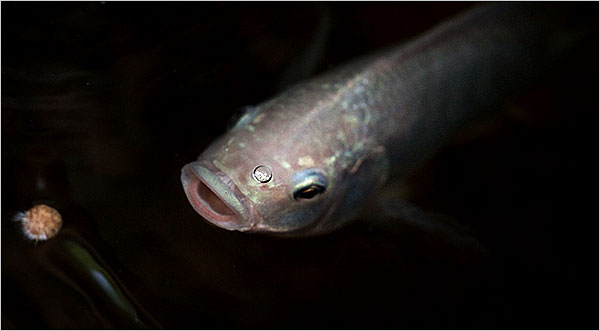Aquaponics
Farm in a Box Aquaponics
The Spotless Garden; New York Times Aquaponics Features Farm in a Box
Reprinted from NY Times article:
MICHAEL TORTORELLO
Published: February 17, 2010.
Earth Solutions aquaponics was merged with Bioponica.

Interested in aquaponics, but not ready to make it a life calling? No problem. An Atlanta company called Earth Solutions now sells kits online, on Amazon.com and the Home Depot’s Web site.
Called Farm in a Box, they range in price from $268 to $3,000, and come with pipes, pumps, frames and fittings.
David Epstein, 50, the osteopath and entrepreneur who invented Farm in a Box, reports that the company has sold several hundred units since the product went on sale last March.
Dr. Dave, as he likes to be called, created Farm in a Box after studying a do-it-yourself manual written by Travis W. Hughey — a creative debt that bothers Mr. Hughey not a bit.

THERE’S a “Beyond Thunderdome” quality to Rob Torcellini’s greenhouse. The 10-by-12-foot structure is undistinguished on the outside: he built it from a $700 kit, alongside his family’s Victorian-style farmhouse in Eastford, Conn., a former farming town 35 miles east of Hartford. What is going on inside, however, is either a glimpse at the future of food growing or a very strange hobby — possibly both.
There are fish here, for one thing, shivering through the winter, and a jerry-built system of tanks, heaters, pumps, pipes and gravel beds. The greenhouse vents run on a $20 pair of recycled windshield wiper motors, and a thermostat system sends Mr. Torcellini e-mail alerts when the temperature drops below 36 degrees. Some 500 gallons of water fill a pair of food-grade polyethylene drums that he scavenged from a light-industry park.
Mr. Torcellini’s greenhouse wouldn’t look out of place on a wayward space station where pioneers have gone to escape the cannibal gangs back on Earth. But then, in a literal sense, Mr. Torcellini, a 41-year-old I.T. director for an industrial manufacturer, has left earth — that is, dirt — behind.
What feeds his winter crop of lettuce is recirculating water from the 150-gallon fish tank and the waste generated by his 20 jumbo goldfish. Wastewater is what fertilizes the 27 strawberry plants from last summer, too. They occupy little cubbies in a seven-foot-tall PVC pipe. When the temperature begins to climb in the spring, he will plant the rest of the gravel containers with beans, peppers, tomatoes and cucumbers — all the things many other gardeners grow outside.
In here, though, the yields are otherworldly. “We actually kept a tally of how many cherry tomatoes we grew,” Mr. Torcellini said of last summer’s crop. “And from one plant, it was 347.” A trio of cucumber plants threw off 175 cukes.
If that kind of bounty sounds hard to believe, Mr. Torcellini has aYouTube channel to demonstrate it. “There’s alternate ways of growing food,” he said. “I don’t want to push it down people’s throats, but if someone’s interested, I’d like to show them you can do this with cheap parts and a little bit of Yankee ingenuity.”
It’s all part of a home experiment he is conducting in a form of year-round, sustainable agriculture called aquaponics — a neologism that combines hydroponics (or water-based planting) and aquaculture (fish cultivation) — which has recently attracted a zealous following of kitchen gardeners, futurists, tinkerers and practical environmentalists.
And Australians — a lot of Australians.
In Australia, where gardeners have grappled with droughts for a decade, aquaponics is particularly appealing because it requires 80 to 90 percent less water than traditional growing methods. (The movement’s antipodean think tank is a Web site called Backyard Aquaponics, where readers can learn how, say, to turn a swimming pool into a fish pond.)
In the United States, aquaponics is in its fingerling stage, yet it seems to be increasing in popularity. Rebecca Nelson, 45, half of the company Nelson &Pade, publishes the Aquaponics Journal and sells aquaponics systems in Montello, Wis. While she refused to disclose exact sales figures, Ms. Nelson said that subscriptions have doubled every year for the last five years, and now number in the thousands. Having worked in the industry since 1997, leading workshops and consulting with academics, she estimates that there may be 800 to 1,200 aquaponics set-ups in American homes and yards and perhaps another 1,000 bubbling away in school science classrooms.
One of Ms. Nelson’s industry colleagues, Sylvia Bernstein, who helped develop a mass-market hydroponic product called the AeroGarden, recently turned her attention to aquaponics. She has started her own YouTube channel and a blog (aquaponicgardening.wordpress.com) and is teaching aquaponics at the Denver Botanic Gardens. She said she has done market research that suggests the technology may appeal to a half-dozen consumer types, including those seeking fresh winter herbs; gadget-happy gardeners; and high-income parents and their science-fair kids. But primarily, she envisions aquaponics as catnip for “the LOHAS market,” she said. “That means Lifestyles of Health and Sustainability — the green crowd.”
It’s worth mentioning that most of those categories would appear to describe the 47-year-old Ms. Bernstein. She built her first aquaponics system with her 15-year-old son on a concrete pad outside her remodeled 1970s-era Boulder, Colo., home. And she has since set up quarters in a 240-square-foot greenhouse. While she boasted about picking fresh basil the other day for a risotto, she has lately been preoccupied with exotic fish. Having tired of tilapia and trout, Ms. Bernstein is now introducing pacu, a thin, silvery import from South America that she called “a vegetarian piranha.”
The above article was written in 2010 after the aquaponic Farm in a Box was launched and had made its appearance on Good Morning America and in the Wall Street Journal. Certainly the publication by the New York Times was the most widely distributed news story on aquaponics yet in the US. Earth Solutions Farm in a Box is distributed by Bioponica; those interested may inquire here for details.
